Chapter 5: Etruscan Art
0.0(0)
0.0(0)
Card Sorting
1/12
Study Analytics
Name | Mastery | Learn | Test | Matching | Spaced |
|---|
No study sessions yet.
13 Terms
1
New cards
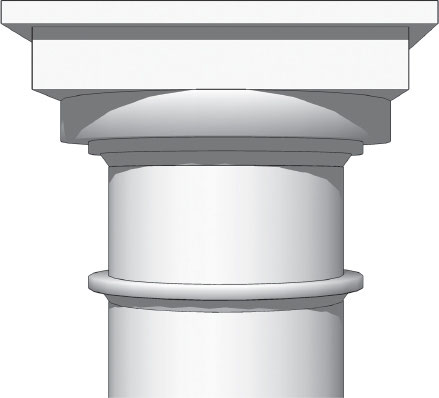
Tuscan order
an order of ancient architecture featuring slender, smooth columns that sit on simple bases; no carvings on the frieze or in the capitals
2
New cards
Tufa
a porous rock similar to limestone
3
New cards
Triclinium
a dining table in ancient Rome that has a couch on three sides for reclining at meals
4
New cards
Stucco
a fine plaster used for wall decorations or moldings
5
New cards
Terra cotta
a hard ceramic clay used for building or for making pottery
6
New cards
Vulca
the master sculptor
7
New cards
necropoli
Much of what is known about the Etruscans comes from their tombs, which are arranged in densely packed \_______ throughout the Italian region of Tuscany, an area named for the Etruscans.
8
New cards
Vitruvius
Little is known about Etruscan temples, except what can be gleaned from the Roman architect \_____, who wrote about them extensively.
9
New cards
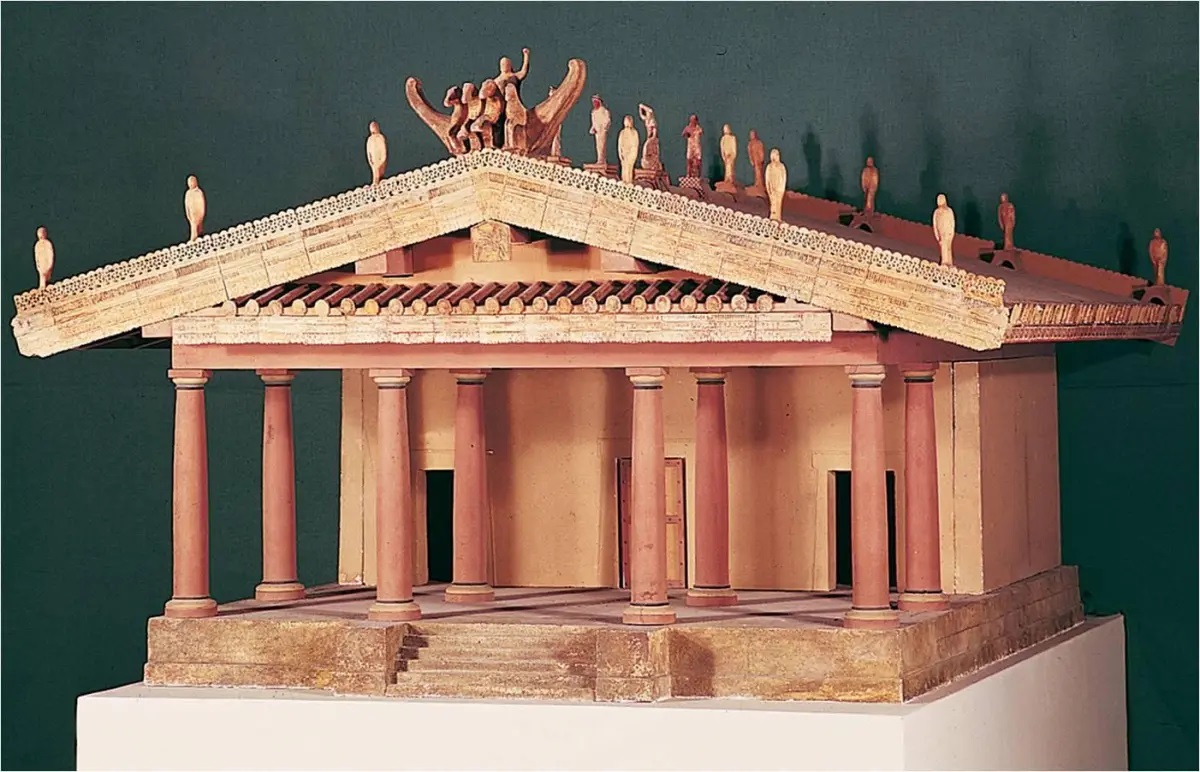
Temple of Minerva
* Little architecture survives
* Temple raised on a podium; defined visible entrance.
* Deep porch places doorways away from the steps.
* Dedicated to Athena (Minerva)
* Temple raised on a podium; defined visible entrance.
* Deep porch places doorways away from the steps.
* Dedicated to Athena (Minerva)
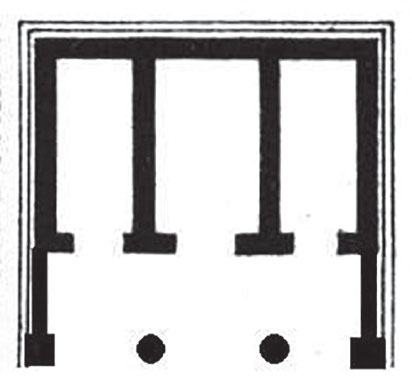
10
New cards
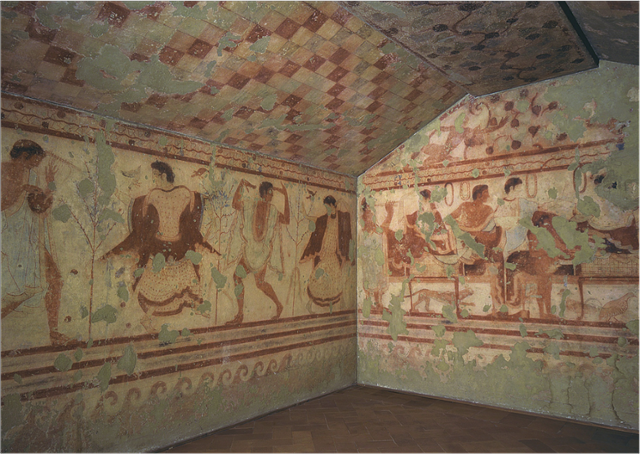
Tomb of the Triclinium
* Ancient convention of men painted in darker colors than women.
* Painted tomb in an Etruscan necropolis.
* Named after an ancient Roman dining table, which appears in the fresco.
* Painted tomb in an Etruscan necropolis.
* Named after an ancient Roman dining table, which appears in the fresco.
11
New cards
terra cotta, stucco, and bronze
Etruscans preferred \___________ for their sculpture; on occasion, stonework was introduced.
12
New cards
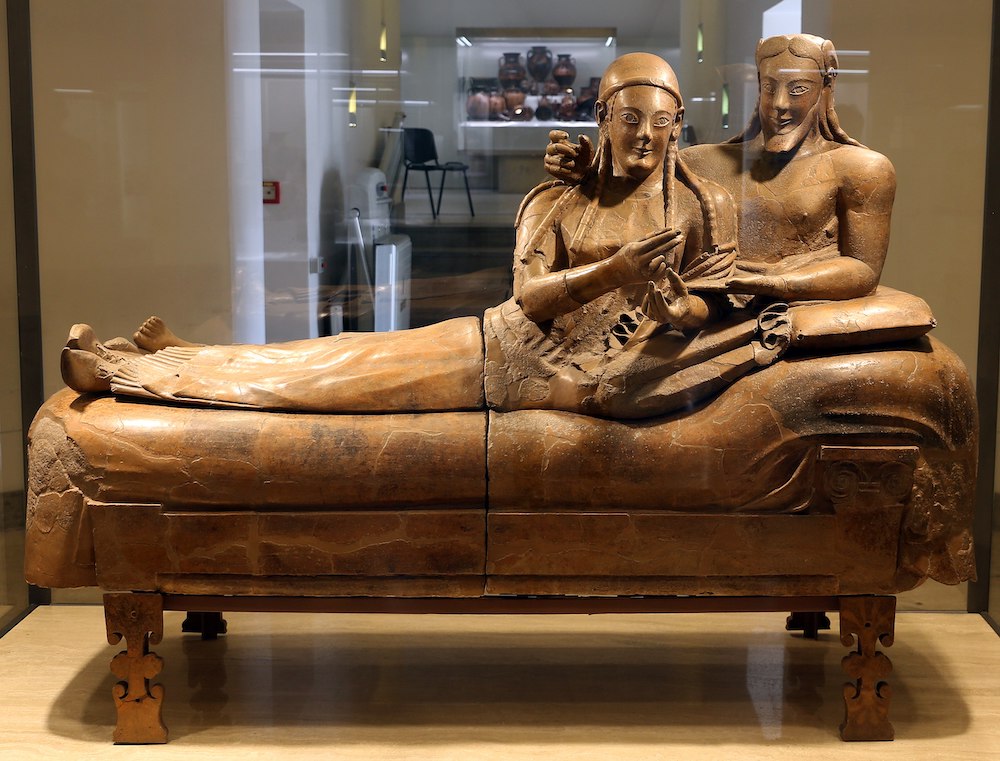
Sarcophagus of the Spouses
* Full-length portraits.
* Great concentration on the upper bodies, less on the legs.
* a married couple, whose ashes were placed inside, or perhaps a large urn used for the ashes of the dead.
* Great concentration on the upper bodies, less on the legs.
* a married couple, whose ashes were placed inside, or perhaps a large urn used for the ashes of the dead.
13
New cards
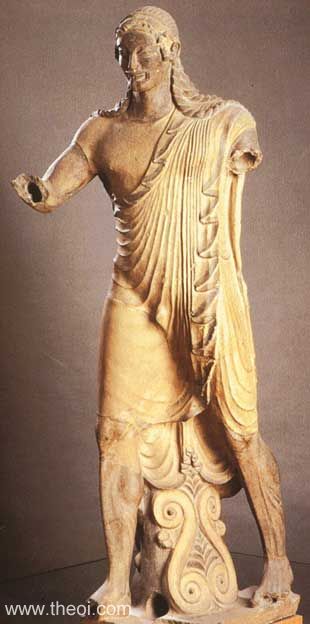
Apollo from Veii
* One of four large figures that once stood on the roof of the temple at Veii.
* Part of a scene from Greek mythology involving the third labor of Hercules
* May have been carved by Vulcan of Veii, the most famous Etruscan sculptor of the age.
* Part of a scene from Greek mythology involving the third labor of Hercules
* May have been carved by Vulcan of Veii, the most famous Etruscan sculptor of the age.